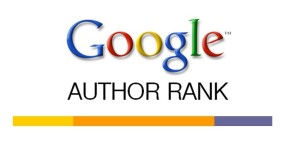In this week’s Boomtown Internet Group Webinar we talked about Google Author Rank. In it we talked about the history of how Author Rank came to be, it’s current effects on SEO, and how to set it up for your blog.
The History of Google Author Rank
A brief history of Google Author Rank takes us back to 2005, where something called “Agent Rank” surfaced through a patent filed by Google. At first, many speculated as to what this might be. We know now that this was a precursor to what we are going to see today with author rank.
However, the patent was predicated on somehow tagging users, something that was unheard of at the time. Remember, in 2005 Myspace was king, Facebook wasn’t what it is today, and Twitter was no where to be seen for a year or two. From a social media perspective, there was still a lot of anonymity online.
What we saw was an incubation of the idea of tagging users between 2005 and 2011. Throughout the span of those years, we saw the true rise of an internet-wide social media expansion, finally setting the stage for the possibility of tagging users.
Enter: Google+. Within 2 months of Google+ bursting onto the scene, we saw a video posted by Google’s Othar Hansson and Matt Cutts. The topic was an introductory video on Google Authorship.
Things started to become clearer, as by 2012 users started to notice a synergy of digital signatures throughout Google platforms. However the most clear-cut statement on what may happen came from Google’s Eric Schmidt on Feb 2, 2013:
“Within search results, information tied to verified online profiles will be ranked higher than content without such verification, which will result in most users naturally clicking on the top (verified) results. The true cost of remaining anonymous, then, might be irrelevance.”
If you read between the lines of what Schmidt said, it’s seems clear what he feels is going to happen, and if we are already seeing the results of it.
What This Means for SEO
What this means now is that Google will have the ability to begin attributing “agents” ( social media profiles) to their content through their Google plus account. Then ranking them accordingly.
Many insiders have speculated that this addition could actually make a bigger impact than many of the algorithm shifts Google has made over the years. Including both Penguin and Panda combined.
Effect on Page Rank
It’s effects on Google Page Rank, are not much honestly. It’s been stated many times that Author Rank won’t be replacing Page Rank, but will be used in conjunction with it, to inform and interact. It will allow Google to rank more trustworthy and higher quality pages, so that’s really key here.
Over the last 3 years, Google has placed a growing emphasis on social interactions. It has also strengthened it’s stance on promoting trusted sites, while trying to negate the black hat tactics that can be out there when it comes to SEO. All of this can be seen as a precursor to Author Rank.
Credibility Reigns Supreme
The main thing to take away from all of this is that Credibility Reigns Supreme. Ever since it’s rise to prominence, people have railed against the validity of content posted online.
And that’s kind-of what Google is trying to do here. They’re trying to tie a name with a face, and a face and name with a story. So to reach wide-spread audience, as far as Google is concerned, posting anonymously may be a thing of the past. This of course, is a large deviation from the early message boards, where you could post something with complete anonymity. Overall, many experts see this as a big step towards improving the overall credibility and transparency of those who generate content online.
How to Set Author Rank up for Your Blog
If you’re interested in setting this up for you’re blog, this is how you do it.
First, make sure that you have a G plus account, I know that seems basic, but I figured I’d get that out of the way first because the rel=”author” attribute links your Google+ account to content that you produce
Make sure to fill out everything correctly in regards to your name, city, education…and put a high quality picture on there, it might not be something that’s completely necessary, but…come on
you will have to provide the name and full URL of any of the blog or blogs that you want to link you in the area of the account marked “Contributor To.” Just click the button marked “Profile” , then the blue button marked “Edit”. From there scroll to the bottom to the area marked “Contributor”. Click “Add custom link” then fill in the both the URL and Label. This will specify both the name, as well as the URL of the blog that you contribute to.
Note: Make sure to click “Done editing” (which is at the top) to make sure that the new info is added accordingly.
Once completed, save your G+ URL address from your browser, as you will need it for the next leg of this process.
Using the rel=”author” attribute
Remember, credibility is king. So to start building your credibility as an author online, you have to make sure Google knows who you are and what you’re writing about.
While Google calls it “authorship markup”, it’s a pretty simple concept overall. It’s basically making sure that credit goes where credit is due. And that Google recognizes the link to the account so it can add to your cred.
Blogs with a Single Author
If you’re looking to add this to a single author blog, it’s a pretty simple process. Pretty much what you have to do is provide the attribute: rel=”author”, to your current “a href=” link code that all users link to your Google+ account.
It will look similar to this:
While this can be added anywhere, we recommend that it be placed in your author bio.
Blogs with Multiple Authors
If the writer/author has a single individual author bio page, we’re going to use a variation of the rel=”author” tag. This variation is known as the rel=”me” attribute.
What we are doing here is pretty much linking from the in-article biography to the site bio page, this then links to the G+ account. It’s essentially an internet version of whisper down the lane.
Once done , go over to the bio page for the individual author, and link the name directly to our Google+ account by utilizing the rel=”author” tag.
It will look similar to this:
It is crucial to make sure that the link that is using the name is being used as anchor text. Otherwise it will not deliver the desired results.
Note: if your blog uses multiple author but does not use individual pages for your authors, then you would just follow the process for the single-author blogs.
From there, you should be good to go. While there isn’t an exact science to this yet, don’t expect to automatically see your picture on a previous or recent post too soon. Just from personal experience, it seems to take upwards of 2 weeks for Google to properly cross-promote content with your G+ account. So don’t get discouraged.
Other Aspects that Factor In
Remember, there are many components that will go into this once it takes shape. Aspects that factor into Author Rank that encompass both SEO and SMO principles:
- Average Page Rank
- Google+ engagement level
- Outside authority indications
- Number of circles
- Frequency of posts
- Authority of publishing sites
- +1s and shares per post
- Comments per post
In Conclusion
The long and short of this is that we don’t know when the full force of this update will surface. As far as we can tell, unlike other updates, there will not be an algorithmic penalty for this. It is estimated that your ranking won’t plummet as a result of “Author Rank”, but many feel that there is the chance you may be leap-frogged by those who’ve successfully prepared for this.


